-
Car Reviews
- Car News
-
Car Comparisons
Latest comparisons
- Chasing Deals
After copying the homework of Ford and Ram design teams, Foton took some notes from their engineering wings, too. But this cheap Chinese rival is a mixed bag
As the force-feeding of advertising material begins to spill out onto screens around the country, Aussies would be forgiven for rolling their eyes at the sign of ‘another’ Chinese ute being introduced to our market – only, Foton isn’t a new brand, rather a returning one.
Now under the local control of Inchcape, the same distributor as Subaru, there’s a good chance you’ll see the new Tunland parked opposite a new Forester in dealers across the country.
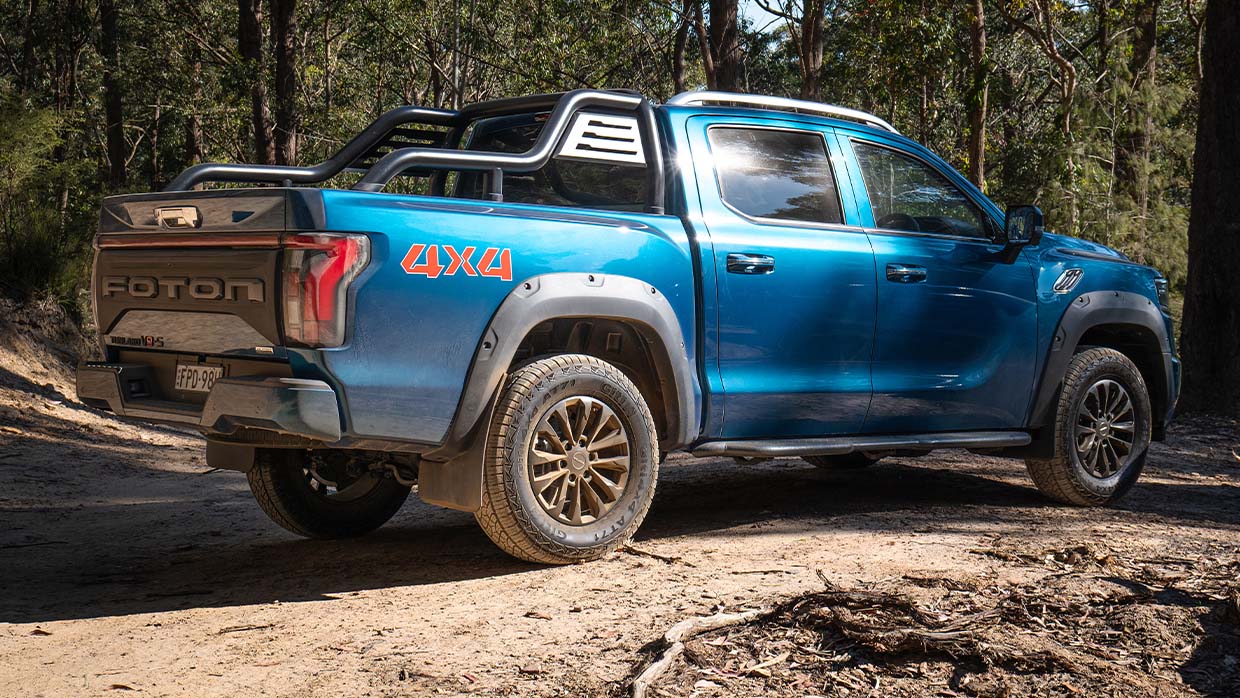
Offered in Australia from 2013 before bowing out in 2019 amid poor sales, the fourth-generation Tunland has gained a cult following in recent years, primarily due to its nigh-on-unkillable 2.8L turbo-diesel Cummins engine.
The returning Tunland is still categorised as a fourth-generation model though Foton tells us it has been completely re-engineered for modern needs and its increased size and in place of the old 2.8L is a 2.0L turbo-diesel engine paired with a 48-volt mild-hybrid system.
Straddling the difference in terms of size between a midsize Ford Ranger and full-size F-150 pickup, the Tunland promises increased capability and practicality for a cheaper price than Ford either.
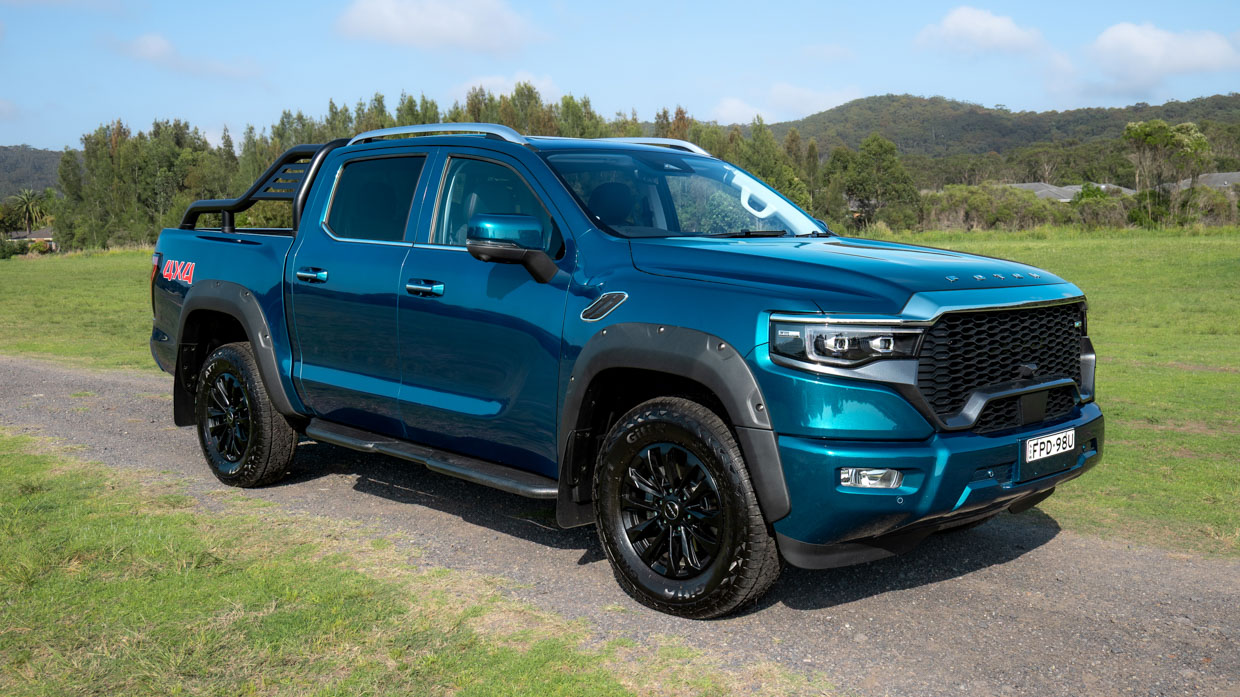
Foton itself is a commercial vehicle heavyweight in its own right, working alongside Mercedes-Benz’s trucking division globally. The local rebirth is due to offer both traditional trucks and utes under the same wing, unlike rival Isuzu.
The year 2025, though, seems an awfully tardy introduction for a Chinese ute when the GWM Cannon Alpha, LDV T60 Max, Korea’s KGM (formerly Ssangyong) Musso and now the BYD Shark 6 have the cheap ute segment on a devastatingly short leash.
The Tunland range is divided into two key grades: the tradie-focused V7 with Ford F-150 styling and the lifestyle-targeted V9 with Ram 1500 styling, armed with leaf- and coil-sprung rear-ends, respectively.
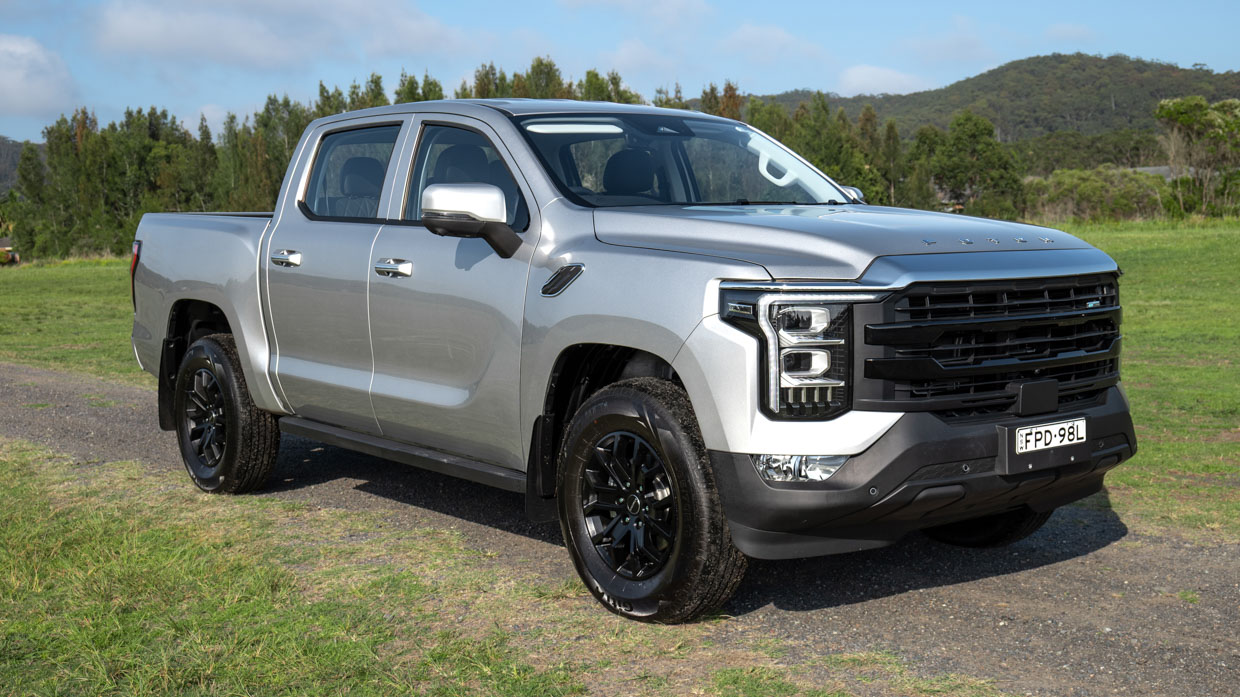
Kicking off at $39,990 before on-road costs, the V7-C 4×2 is equipped with the following features:
Step up to the 4×4 version for $42,990 list and buyers also net a locking rear differential, all-terrain tyres, and additional drive modes.
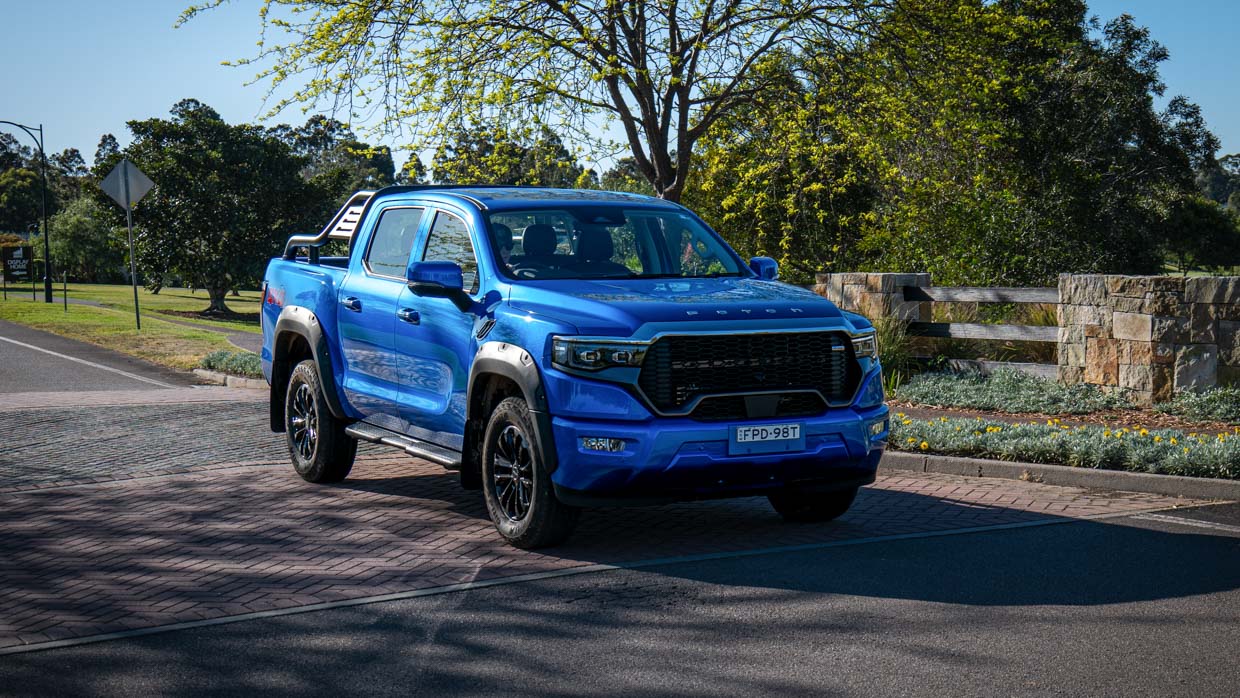
Above that, the V9-L costs $45,990 before on-road costs and adds the following:
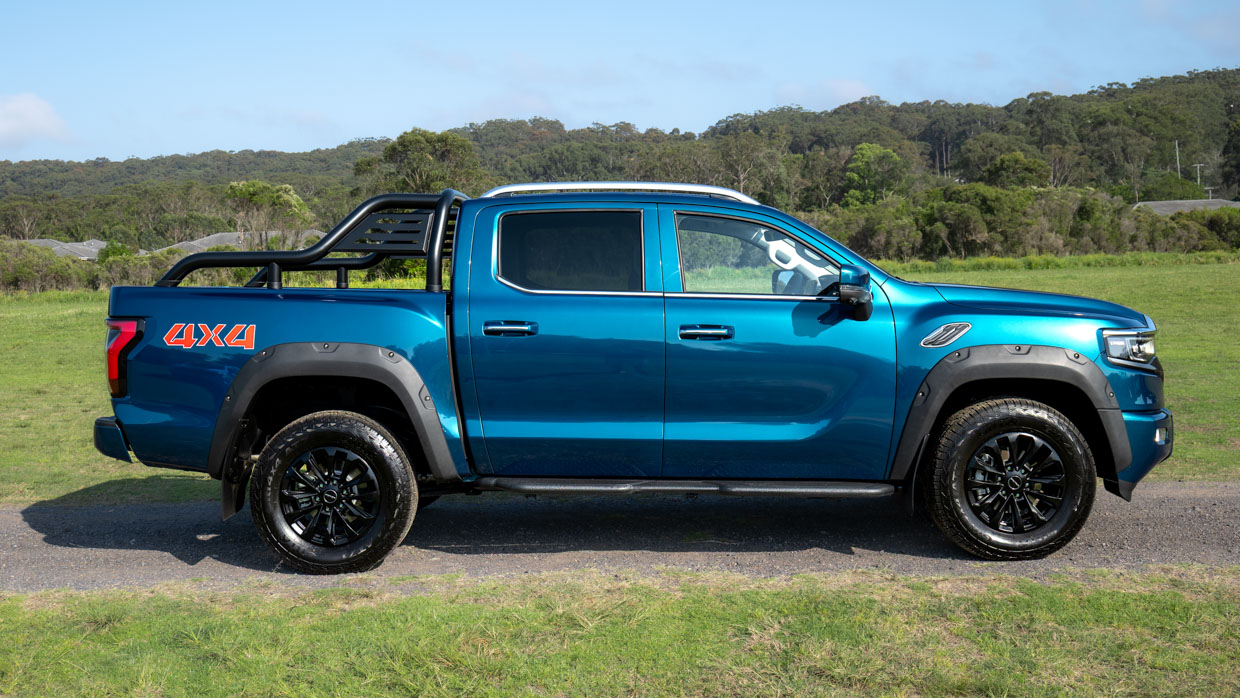
Finally, the V9-S adds the following for $49,990 before on-road costs:
Midsize ute drivers will find the differences behind the wheel of the Tunland to be immediate.
At 2090mm wide and 5617mm long, the Tunland stretches an extra 200mm and 300mm respectively, over the size of a typical dual cab. Get used to spending more time making sure you’re between the white lines.
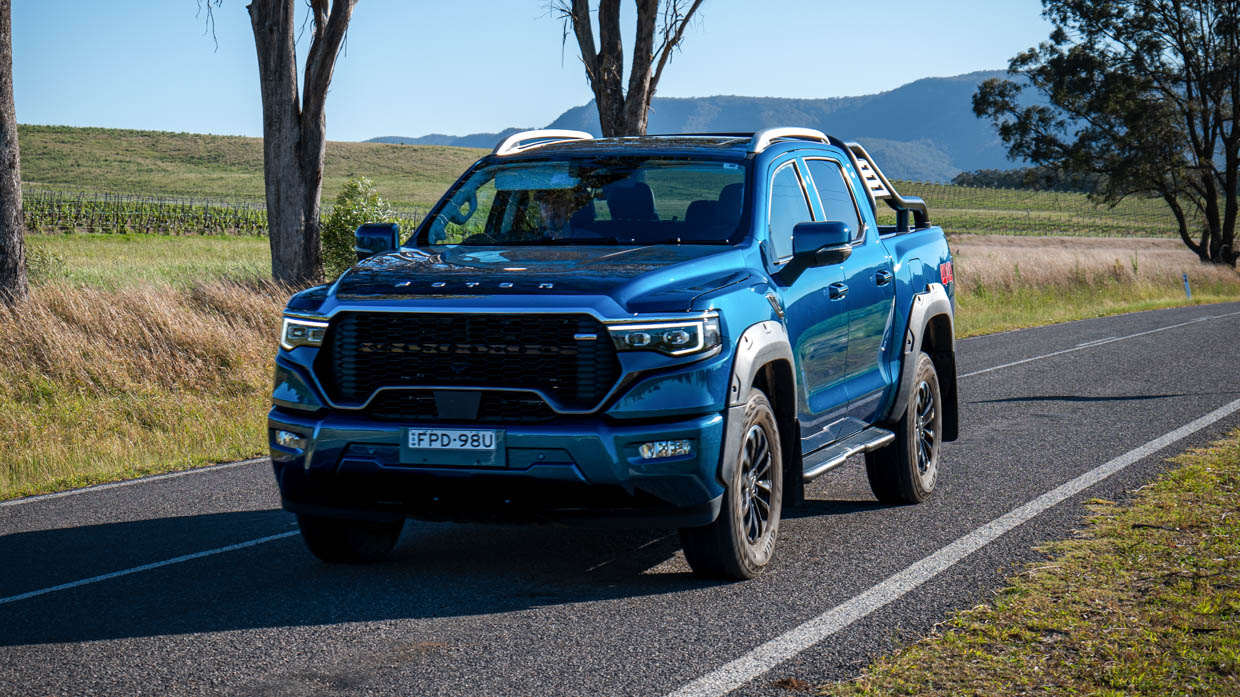
With a larger overall footprint, a long 3355mm wheelbase (85mm more than a Ford Ranger), the Foton feels stable on the move, and so it should. This translates to not just better performance at higher speeds on bitumen but also on dirt roads.
It’s not about to dethrone a Ranger or Kia Tasman for dynamic ability, but the Tunland handles well for a vehicle of this size and price point, with predictable driving behaviour and suspension that strikes a good balance between comfort and control.
It’s easily more comfortable and smoother to drive than the likes of the GWM Cannon Alpha, providing a similar demeanour to the cult-favourite KGM Musso.
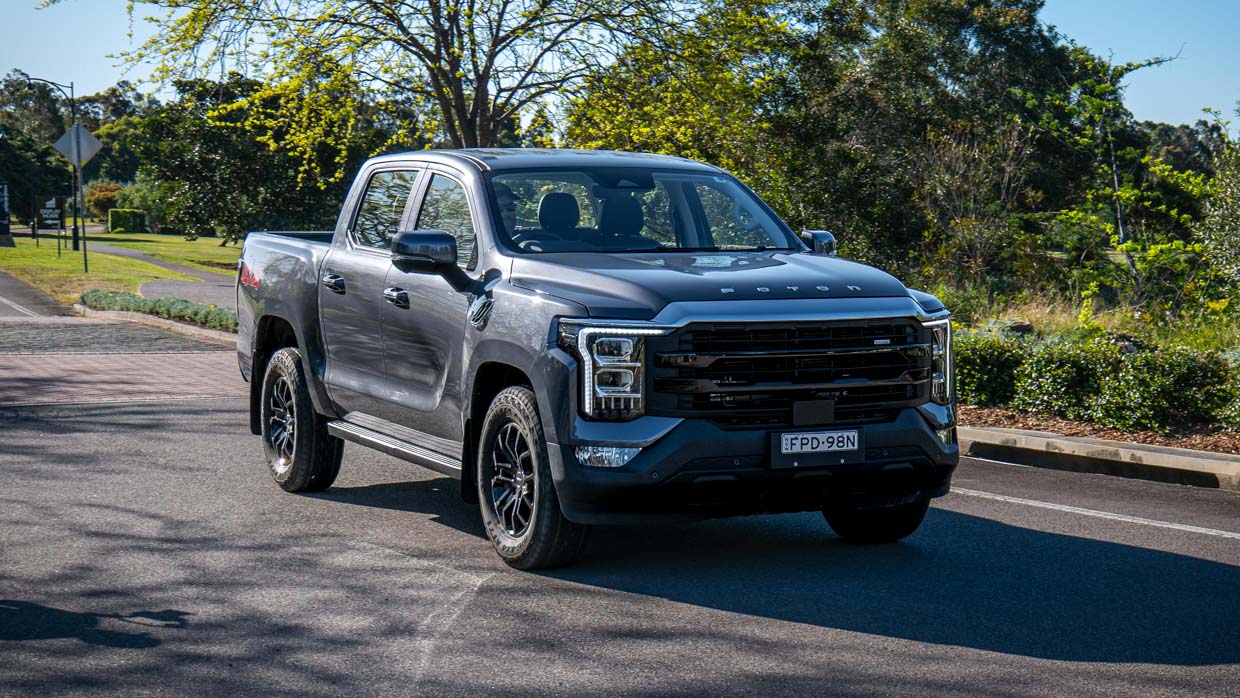
The multi-link, live-axle arrangement on the V9 is naturally the more agile of the Tunlands. In contrast, the V7 feels more one-dimensional in its response with leaf-springs in the rear and returned front shocks to match.
At speed, the two feel more similar in their response, but if you find yourself unladen in start-stop traffic in the V7, the ride turns brittle.
Chasing Cars was able to sample both the V7 and V9 with a 425kg load in the rear and two blokes in the front. Let’s call it an even 600kg, as it was after lunch…
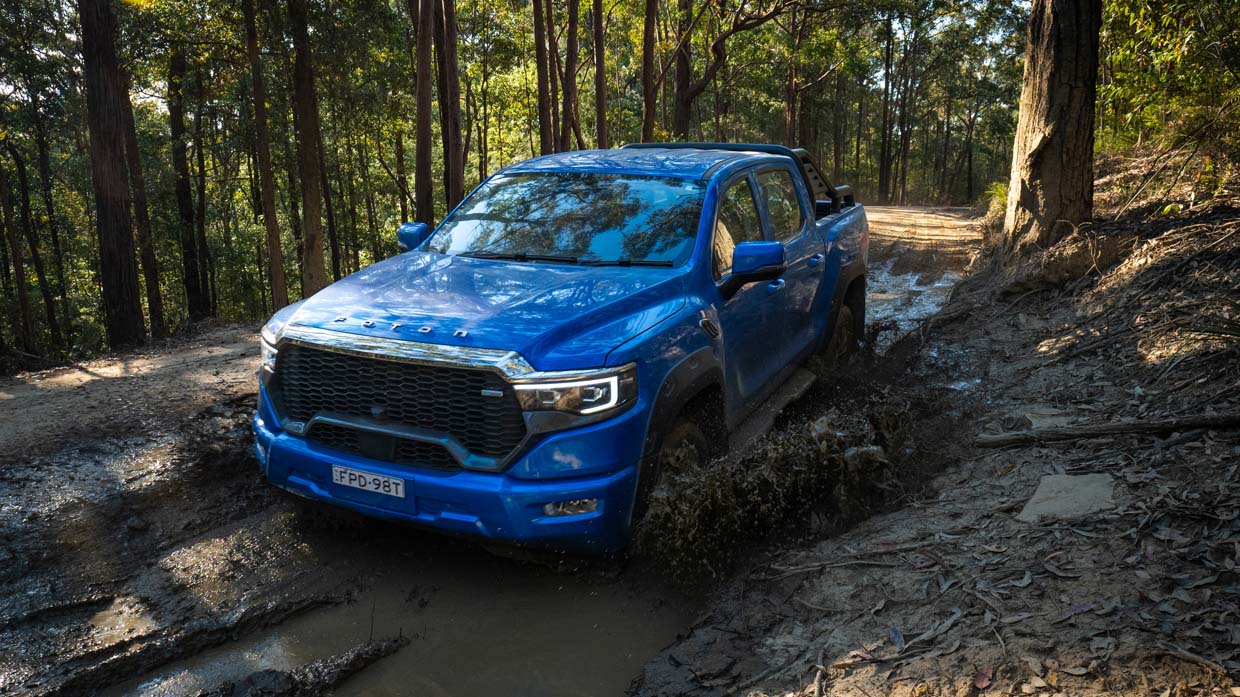
Both handle competently underload, with slightly more suspension sag noted in the V9. That said, we’d still be gravitating towards the V9 unless you plan on load-hauling daily, as the multi-link arrangement provides superior compliance.
The 2.0-litre turbo-diesel engine combined with a 48-volt assistance motor provides an underwhelming 120kW at 3600rpm and 450Nm between 1500 and 2400rpm.
The outputs skew on the lower end of ‘adequate’, with the electric assistance only providing limited assistance of nine kilowatts and 54Nm at lower speeds, similar to the ‘V-Active’ Toyota Hilux.
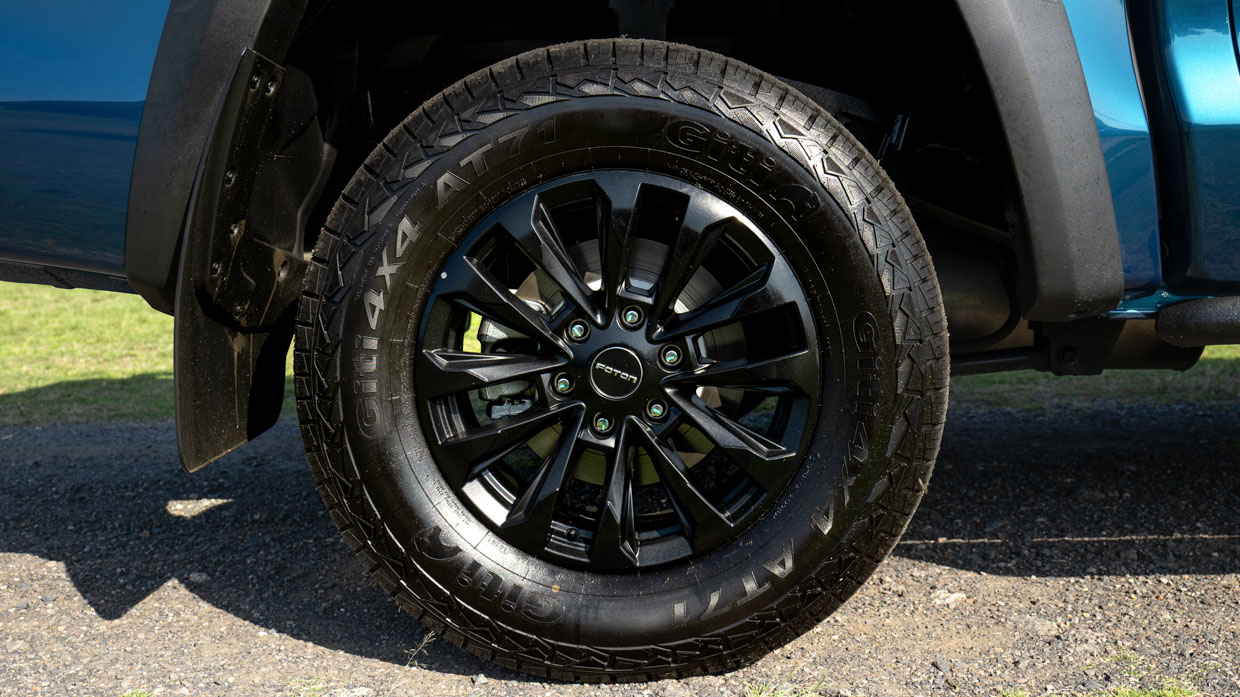
Once laden to nearly three tonnes, the Tunland slowed notably. We suspect anyone who plans to hitch up a load equivalent to its 3500kg towing capacity will need to be patient.
Foton has thankfully paired this engine-motor combination with a ZF-sourced eight-speed torque converter automatic, which is well calibrated in the Tunland. Power is then shuffled to the ground via the automatic 4×4 system, which can be used on sealed surfaces and performs competently.
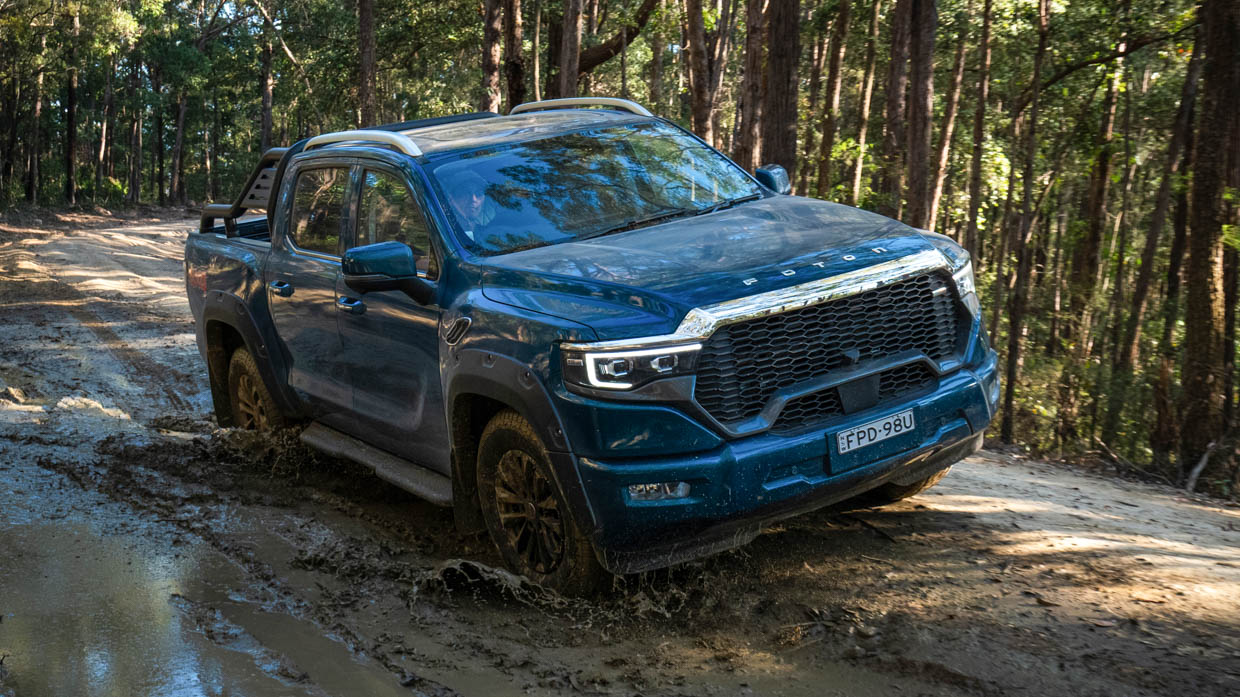
We briefly tackled some mild off-roading in the Tunland, where the base traction control seems fairly well calibrated. More investigation is needed to assess its off-road capability, but key figures such as the solid 240mm minimum ground clearance and 700mm wading depth are encouraging.
Taking a leaf out of BYD’s book, Foton is working closely with a range of aftermarket accessory suppliers, including Ironman, to organise and develop upgrades such as more aggressive tyres, a 40mm lift kit and bash plates.
The Tunland may be built on old bones but the interior design team knows there is nothing quite like slapping a giant flatscreen in the middle to really remodel the place.
Measuring 14.6 inches in size, it might not spin on a dime like a BYD Shark 6, but the landscape screen is of decent quality and was fairly easy to use, though it was difficult to connect to wireless Apple CarPlay on a consistent basis.
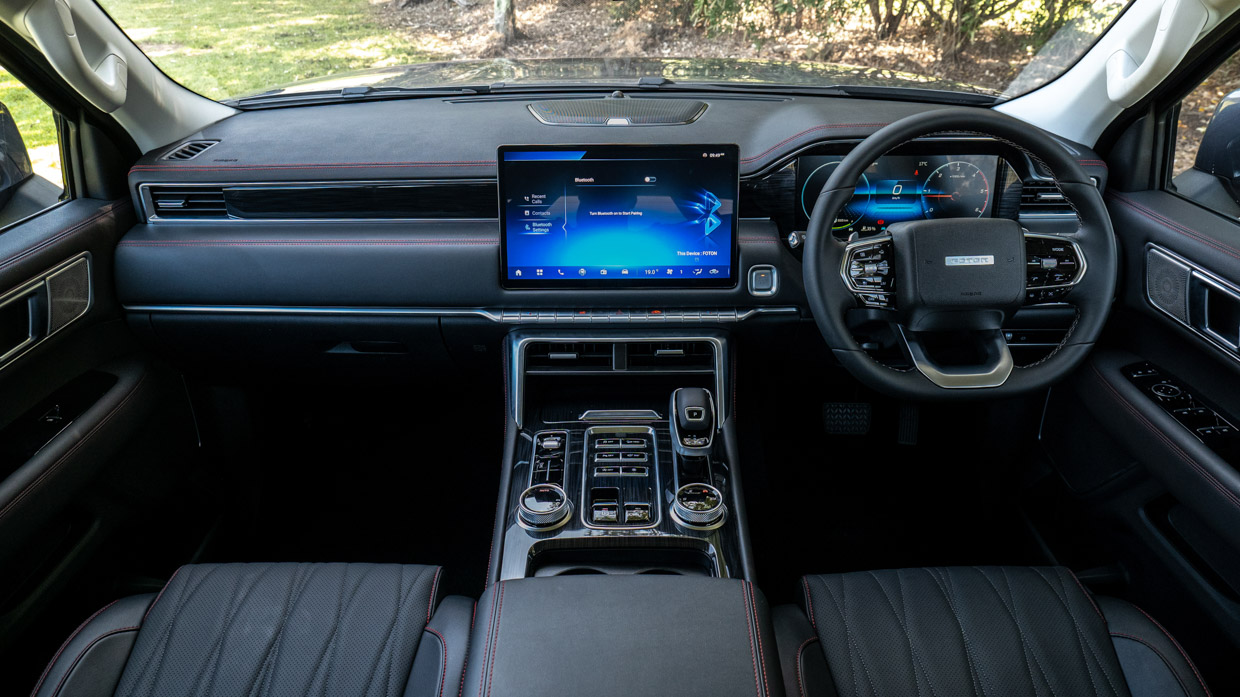
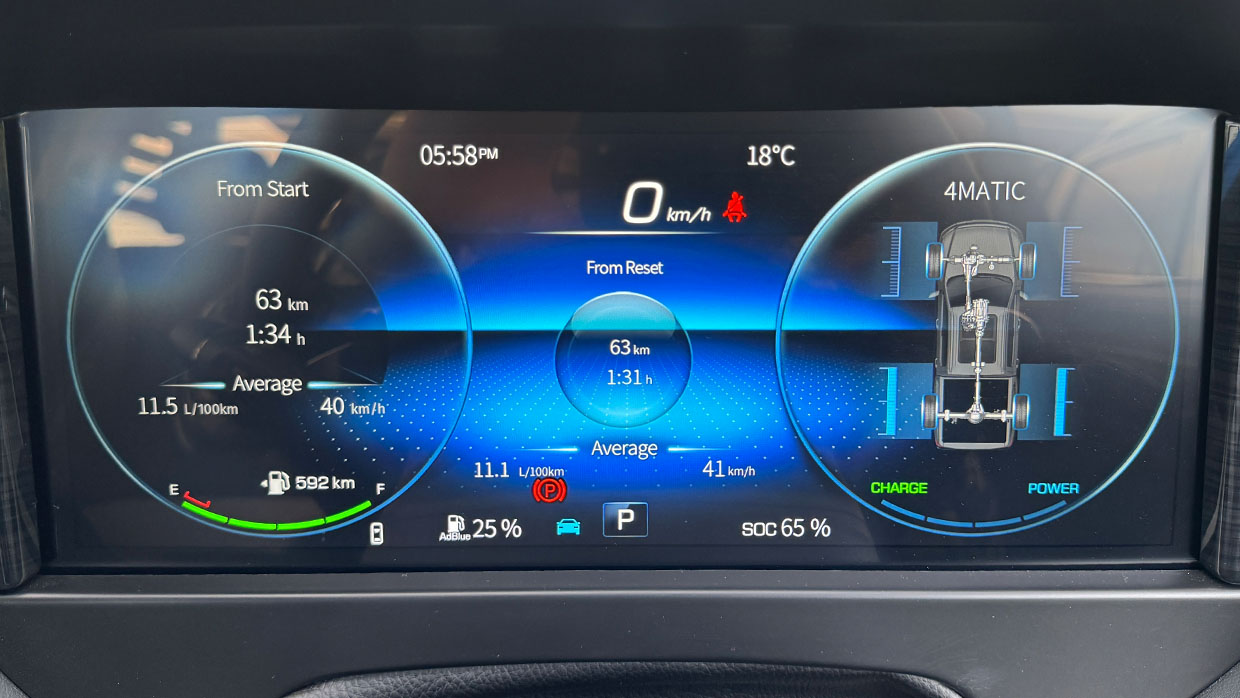
A row of physical buttons sits underneath to manage the climate control and seat heating/ventilating, in a nice touch for usability.
It works in conjunction with a 12.3-inch multimedia screen, which bears a striking resemblance to Mercedes-Benz’s MBUX software.
Incredibly, it even labels the four-wheel-drive system as ‘4Matic’. Foton tells us there is no pending lawsuit and the ‘inspiration’ comes from its close partnership with the brand in other areas.
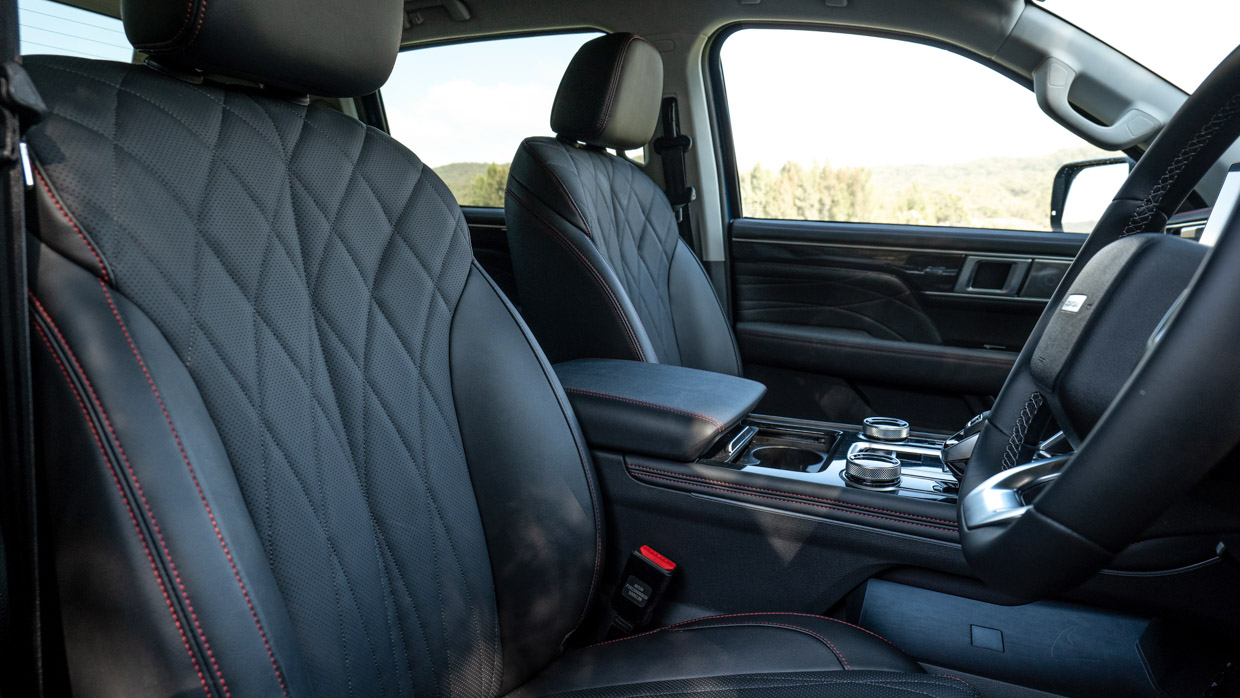
The front seats feature a good degree of adjustable but are flat in all respects, with a severe lack of side bolstering saw us sliding all over the place as soon as we hit the corners.
As expected at this price point, many cheap materials make up the cabin space but of greater concern is the build quality issues we experienced; from the squeaky centre consoles to door trims rubbing against the interior glass as we drove along.
The back seat is a big selling point for the Tunland, with my 182cm frame having plenty of space to spread my legs, even when sitting behind my own driving position. My legs do sit a bit high and lack underthigh support but knee and toe room are solid.
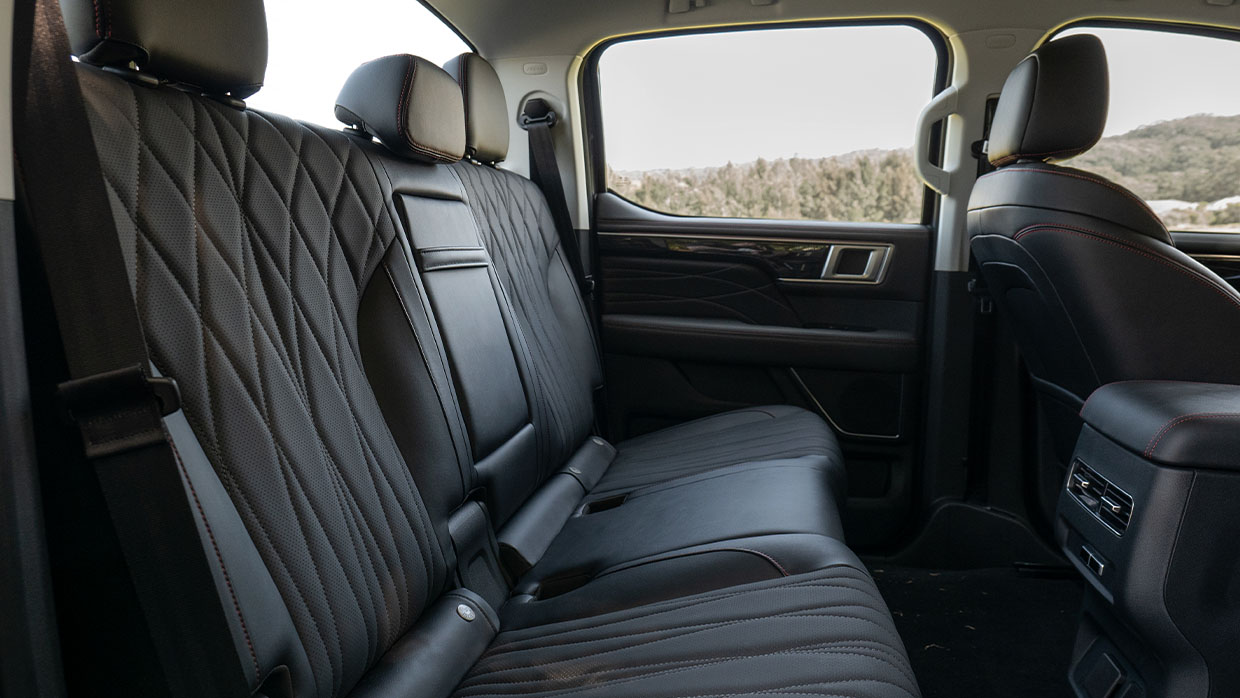
Visibility is also impressive, with a low window line and soft padding on the tops of the doors for your elbow to rest. Rear vents are standard, as are the old-style USB-A ports.
Being a wider vehicle, the centre seat is also considerably more usable than most utes. Young families will quickly grow to dislike the one-piece bench, which makes fitting child seats an arduous task, but the 40/60 split-fold bench is a nice touch for versatility.
Measuring 1577mm long, 1650mm wide (1240mm between the arches) and 530mm tall, the tray of the Tunland is slightly bigger than most midsize utes.
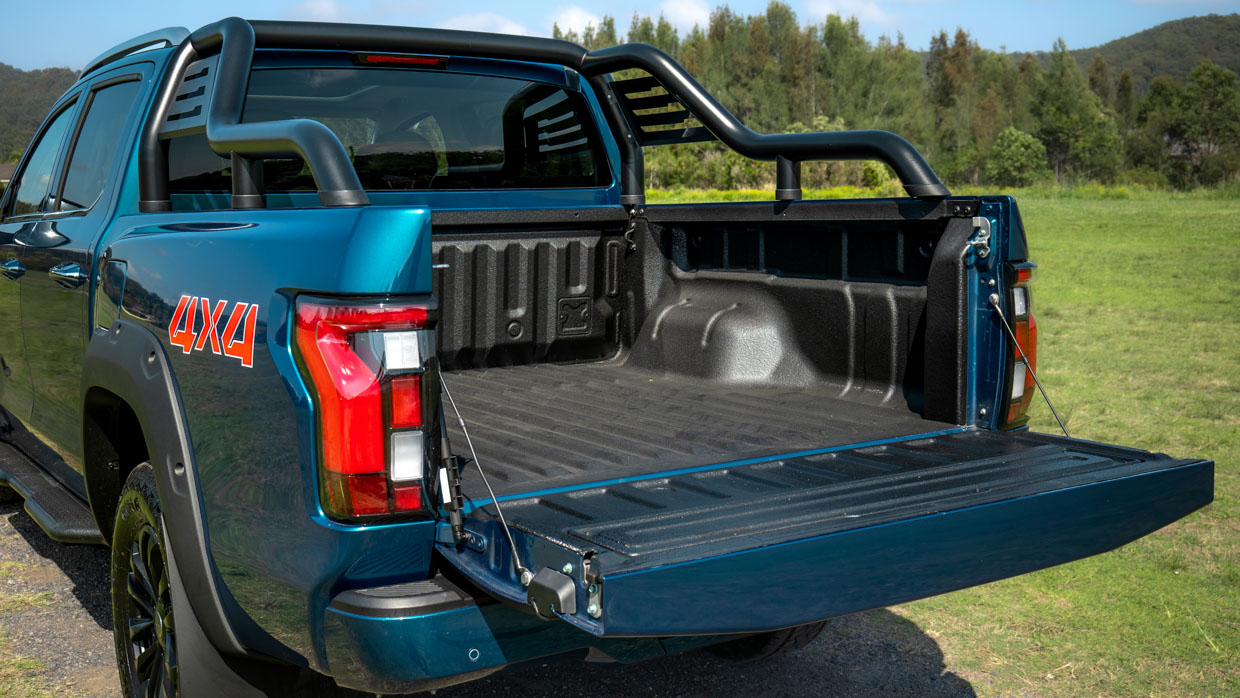
Disappointingly, there is no power outlet in the tray of the Tunland and the V7 grades don’t feature a locking tailgate. The V9 gains this ability, but the lock is entirely mechanical with no connection to the central locking system. A fix is on the way, we’re told, but we were given no timeline.
While the Tunland is rated to tow 3500kg braked, no owner will be able to do so until Foton finishes complying an Australian-standard tow bar. A matter that will be fixed in “weeks, not months”, we’re told.
Foton declined to provide any transparency to buyers or Chasing Cars on its plans, or perhaps lack of plans, to run the Tunland through the Australasian New Car Assessment Program, otherwise known as ANCAP.
A five-star rating is crucial to fleet sales in Australia, so we think it likely in the longer term but for now, buyers must rely on the good faith of a brand they barely know.
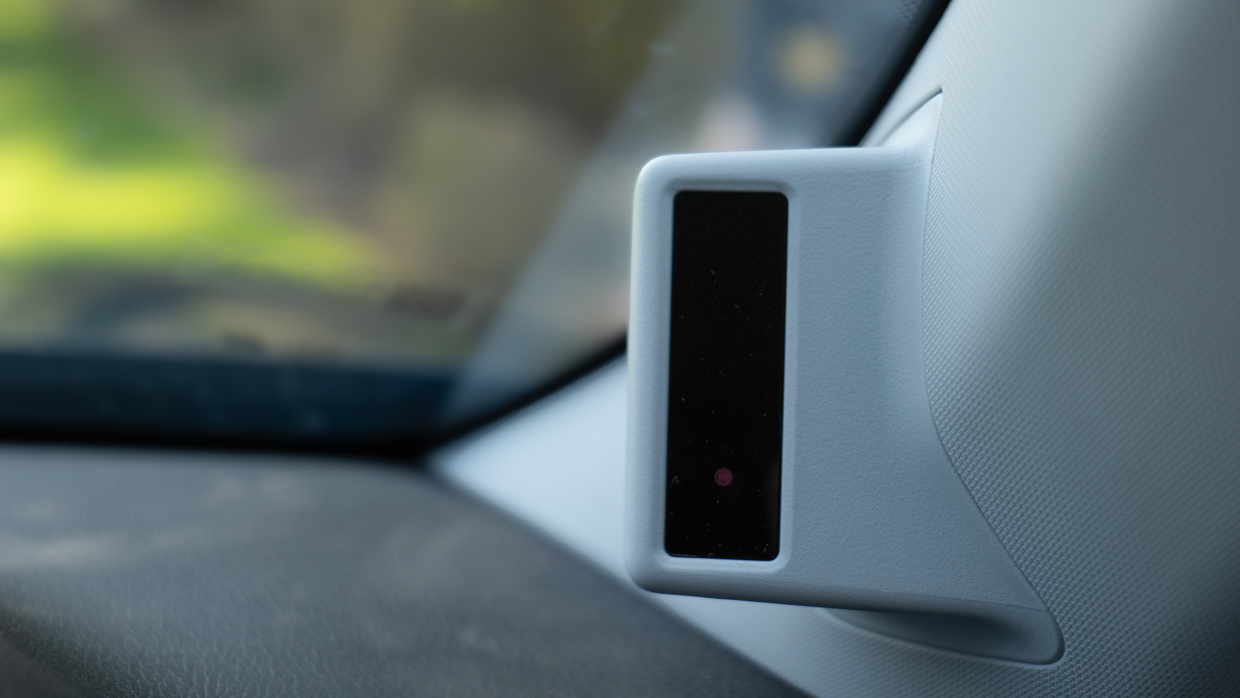
In terms of safety equipment, the Tunland is offered as standard with the following highlight features:
It’s notable that these functions are standard and generally well-tuned in our experience. For example, the tuning of the lane keep functionality felt balanced and allowed the driver to take control on tight roads where it was difficult to keep the two-metre-wide ute perfectly between the lines at all times.
Even the driver monitoring system, equipped only to the top V9-S grade, is one of the better-tuned systems we’ve used.
The Tunland’s 48V-equipped 2.0L hybrid engine provides an average advertised fuel economy of 8.0L/100km in combined conditions. During our initial test, we saw 9.1L/100km when driving in mixed conditions with two people on board.
The Tunland is equipped with a 76-litre fuel tank, enough to get you 950km of range according to official figures. There’s also a 12-litre AdBlu tank that will need to be refuelled from time to time.
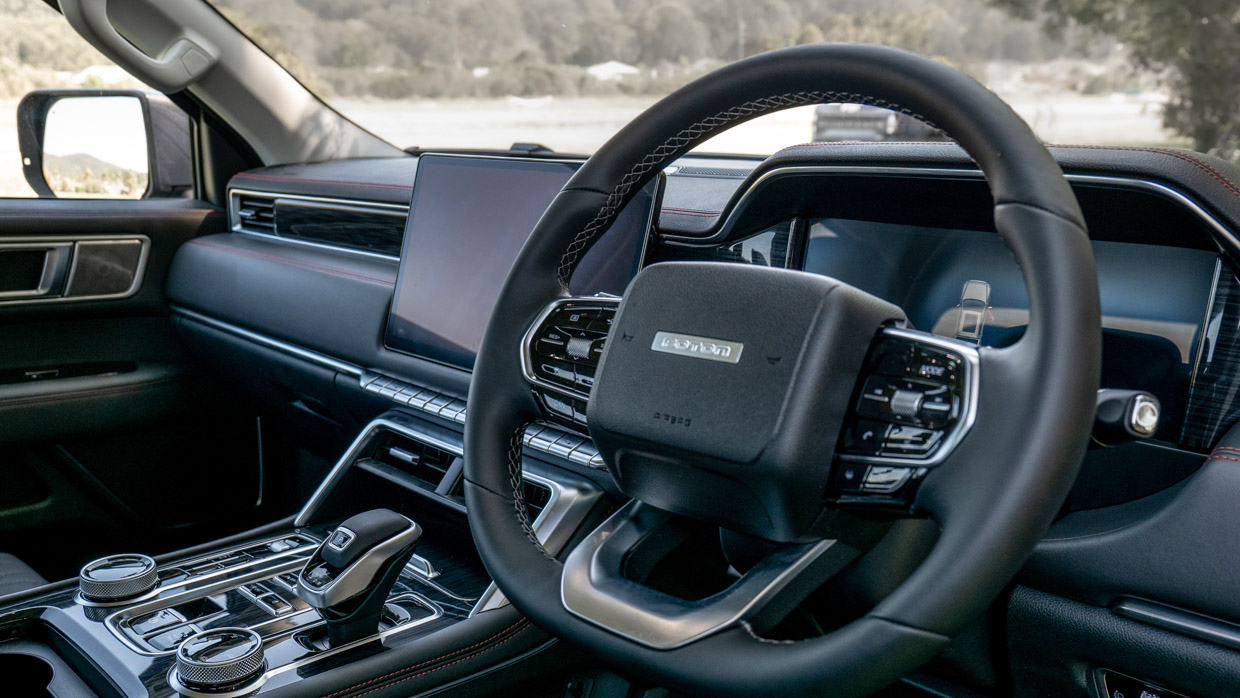
After a complimentary service at the 5000km mark, the Tunland will need to be back at the mechanic every 12 months or 15,000km, whichever comes first.
Service pricing is capped for up to seven years, costing $4493 during that time, but the more comparable $3378 is more than a GWM Cannon Alpha diesel ($2765) and significantly more than the just-released MG U9 ($2355).
Foton offers a seven-year, unlimited-kilometre warranty on the Tunland.
With such blatantly copied designs from the Ford F-150 and Ram 1500, the Tunland risks being written off by many Australians who may discount Foton’s effort as the sort of dressed-up, half-effort stereotype that Chinese brands have been fighting against for years.
Bizarre missteps such as launching without a tow bar, and a tailgate owners can’t lock, also show that Foton still hasn’t quite found solid footing in Australia. Varying quality issues, from small squeaks of trim, all the way through to an inconsistent mild-hybrid system, mean it would probably be wise to hold off on purchasing a Tunland until these shortcomings are addressed.
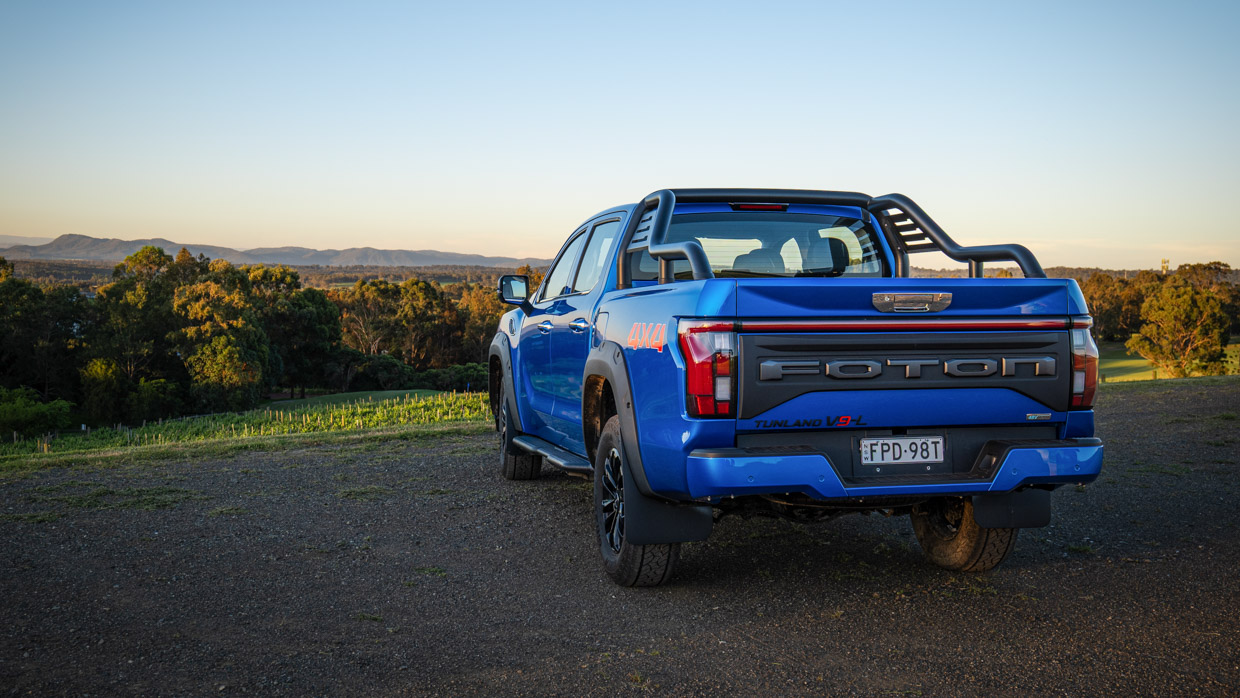
That said, the Tunland makes more of a case for itself than we were expecting. Backed by a long warranty, an affordable price tag and additional practicality in the back seat and tray that other rivals lack.
Perhaps more importantly, Foton has overtaken Chinese rivals such as GWM in some respects by offering an affordable ute with sorted driving dynamics and well-tuned safety systems. No longer is cheap ute ownership repaid with our patience.
About Chasing cars
Chasing Cars reviews are 100% independent.
Because we are powered by Budget Direct Insurance, we don’t receive advertising or sales revenue from car manufacturers.
We’re truly independent – giving you Australia’s best car reviews.
The estimate provided does not take into account your personal circumstances but is intended to give a general indication of the cost of insurance, in order to obtain a complete quote, please visit www.budgetdirect.com.au. Estimate includes 15%^ online discount.
^Conditions Apply
Budget Direct Insurance arranged by Auto & General Services Pty Ltd ACN 003 617 909(AGS) AFSL 241 411, for and on behalf of the insurer, Auto & General Insurance Company Limited(ABN 42 111 586 353, AFSL 285 571).Because we don’t know your financial needs, we can’t advise you if this insurance will suit you. You should consider your needs and the Product Disclosure Statement before making a decision to buy insurance. Terms and conditions apply.
Indicative quote based on assumptions including postcode , 40 year old male with no offences, licence suspensions or claims in the last 5 years, a NCD Rating 1 and no younger drivers listed. White car, driven up to 10,000kms a year, unfinanced, with no modifications, factory options and/or non-standard accessories, private use only and garaged at night.
^Online Discounts Terms & Conditions
1. Discounts apply to the premium paid for a new Budget Direct Gold Comprehensive Car Insurance, Third Party Property Only or Third Party Property, Fire & Theft Insurance policy initiated online on or after 29 March 2017. Discounts do not apply to optional Roadside Assistance.
2. Discounts do not apply to any renewal offer of insurance.
3. Discounts only apply to the insurance portion of the premium. Discounts are applied before government charges, taxes, levies and fees, including instalment processing fees (as applicable). The full extent of discounts may therefore be impacted.
4. We reserve the right to change the offer without notice.